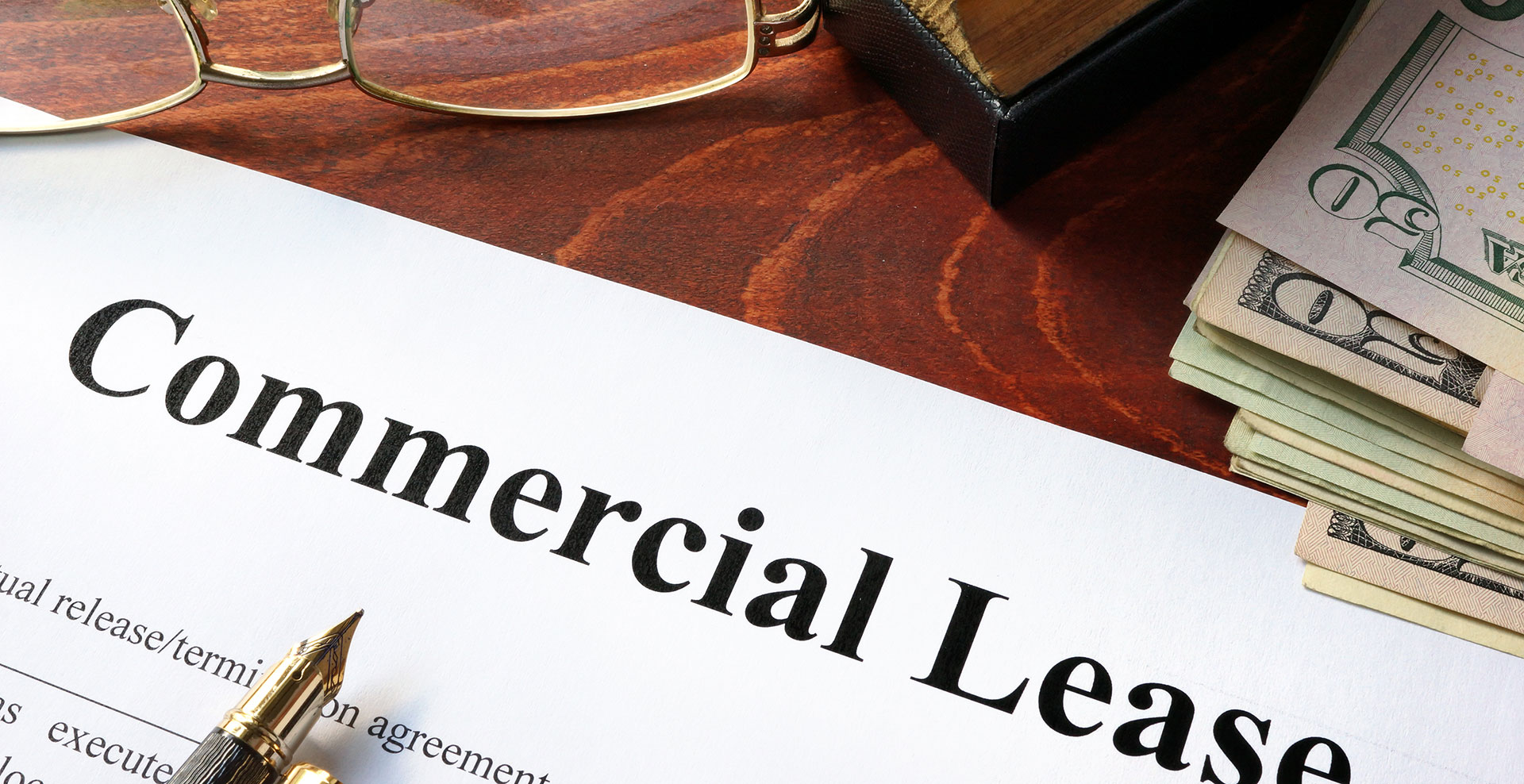
Commercial Leases in the Age of COVID-19
Fennemore Craig Client Alert
Commercial Leases in the Age of COVID-19
As a result of the economic collapse relating to COVID-19, many tenants failed to make their monthly rent payments that were due at the beginning of April. With the calendar turning over to May, a new wave of tenants have now missed their monthly rent payments that were due at the beginning of May. What options does this leave for a landlord?
Finding Creative Solutions
Some tenants who missed their rent payments have already approached their landlords about negotiating lease modifications to get through this difficult time. Other tenants have simply missed their rent payments and have not communicated anything to their landlords. Each tenant may have unique circumstances as to why they missed their rent payment, so during this economic crisis it is important that a landlord try to keep open lines of communication with their tenants in order to find the best possible solution.
With current demand for retail and office spaces falling, many landlords do not want to be left having to find new tenants to fill newly-vacated space. As a result, modifying a lease might be a better solution for some landlords than simply terminating a lease due to a rent default. While many tenants are requesting complete rent abatement for the near future in order to weather the current storm, most landlords do not think this is a workable solution. Outside of full rent abatement, what kind of creative lease modifications could be advantageous to both a landlord and tenant?
Partial rent abatement is certainly better for a landlord than full rent abatement, and a partial reduction in rent may be enough to allow a tenant’s business to survive. Adding additional term at the end of the lease (at a higher rental rate) could help reduce the impact of rent abatement on the landlord. In addition, increasing the rental rate once full rent recommences is another way for landlords to recoup any abated rent. An alternative structure would be to include “abated rent payback provisions” that are tied to certain operating metrics. These provisions would allow a landlord to receive make-up payments that are tied to a tenant’s revenue or profitability once business returns to normal. Finally, making sure that any abatement is conditioned on continued economic difficulty will be important to ensure that tenants are not receiving a windfall and landlords are not missing out on rent that they should otherwise receive.
However, before a landlord can agree to make any lease modifications with a tenant at a project that is subject to financing, the landlord will need to consider the impact this will have on the landlord’s ability to meet its financial obligations to the lender. In addition, the landlord will need to understand the requirements in the landlord’s loan documents. Most loan documents include lender approval rights over lease modifications (at least for any major tenants). As a result, lenders will play a critical role in deciding whether and to what extent a lease can be modified.
There are significant legal issues that need to be considered when doing a lease modification. Properly structuring a lease modification is important in order to make sure that a landlord preserves its rights relating to current lease defaults, does not waive any rights that might need to be enforced in the future, and does not violate any loan covenants.
WHAT HAPPENS WHEN ATTEMPTS TO NEGOTIATE A RESOLUTION FAIL?
Commercial Tenant Evictions
On April 7, 2020, Governor Doug Ducey entered Executive Order 2020-21 (“EO 2020-21”) aimed at preventing certain commercial tenant evictions.
To whom does the order apply?
“Commercial tenants” are defined in EO 2020-21 as sole proprietors, partnerships, c-corporations, s-corporations, limited liability companies, independent contractors, self-employed individuals, 501(c)(3) organizations, 501(c)(19) organizations, and tribal businesses. EO 2020-21 applies to commercial tenants with fewer than 500 employees.
What does the order do?
It prevents evictions of eligible commercial tenants who are unable to pay rent due to COVID-19 related financial hardship. The order is rather expansive in that it applies not only to eviction actions filed with the court, but also all lock outs, notices to vacate, or any other attempt to inhibit business operations.
In order to trigger this protection, the tenant must notify the landlord or property owner:
- In writing;
- As soon as practicable;
- With any available supporting documentation of its inability to pay rent due to financial hardship; and
- Acknowledge that the contractual terms of the lease remain in effect.
What does the order not do?
First, it does not excuse a tenant’s obligation to pay rent or otherwise abide by the terms of their lease. To the contrary, EO 2020-21 requires that any commercial tenant receiving eligible assistance (i.e. funds from a PPP loan) apply a portion of that assistance to past or currently due rent. The requirement appears to operate somewhat on the honor system, given that it prohibits landlords from requiring any specific percentage or amount of that assistance be committed to rent and includes no penalty or procedure for eviction should a commercial tenant fail to apply their assistance payments toward rent.
Second, it does not apply to eviction actions that do not relate to the failure to pay rent. For example, if a commercial tenant is engaging in illegal or unsafe activity on its leased property, the landlord can still move forward with eviction.
Third, EO 2020-21 lists a series of suggestions for landlords and/or lenders to consider:
- Deferring or adjusting rent payments for tenants;
- Waiving late fees, penalties and interest that would otherwise be triggered by late rent payments; and/or
- Providing an opportunity for forbearance of commercial mortgage loans, where the borrower (i.e. landlord) has been prevented from proceeding with commercial evictions.
Fourth, it does not prohibit the continuation of any eviction action or proceeding predating the March 11, 2020 Public Health State of Emergency.
EO 2020-21 expires on May 31, 2020, unless otherwise extended by the Governor. Upon expiration, eviction actions can proceed. As such, it will be important for landlords to take all steps necessary to comply with notice, cure and default provisions outlined in their applicable leases in order to promptly move forward with eviction actions once they are able to do so.
What can a landlord do if they cannot evict a non-paying tenant?
Although landlords and property owners are currently prohibited from evicting certain commercial tenants due to a failure to pay rent, they do have other options.
Declare the Tenant in Default
Landlords should carefully examine their lease language surrounding default and default notices. Landlords should understand that nothing in the EO 2020-21 covering commercial leases prevents landlords from declaring a tenant in default when a default occurs (and reoccurs if that is the case).
Landlords should determine what events trigger a tenant default under the lease. Typically, non-payment of rent or other charges constitutes an event of default. Failure to continuously operate at the premises is also a common event of default.
If an event of default occurs, most commercial leases provide a procedure by which landlords must provide written notice of the default. There may be language in the lease that allows the tenant a limited time to cure the default. Even if there is no language in the lease allowing a cure, it is considered a best practice to provide the tenant with a period of at least five (5) days to cure the default in order to comply with the statute. A.R.S. § 33-361(A). A copy of this notice should also be sent to any personal guarantors on the lease. Also, the landlord should carefully read any “notice” provision in the lease to make sure that the default notice is delivered in strict conformity with the lease terms (e.g. sent certified mail, return receipt requested, etc.).
The language of the default notice should be carefully worded and should avoid saying that the lease is “terminated.” This is an important point because lease termination results in a cut off period for recovery of damages. Damages for breach of lease (unpaid rent and other charges) can be recovered for the duration of the remaining lease term, subject to the landlord’s duty to mitigate, but once the lease is “terminated,” no further damages can be recovered beyond the termination date.
Sue for Damages
Although EO 2020-21 purports to prevent evictions of commercial tenants, it does not prevent civil lawsuits to recover money damages. At some point a landlord may feel it necessary or expedient to bring a lawsuit to recover damages.
Filing a lawsuit will open the door to discovery, where the landlord may be able to discover what, if any, financial assistance the tenant received during the outbreak. In some cases, these funds are intended to provide money that can (and should have) been used to pay rent. To date, there is no prohibition on landlords obtaining a judgment for outstanding rent or from efforts to obtain prejudgment relief from a court. If you choose to seek such relief, understand that the legal landscape on this continues to change and what is permissible today may not be tomorrow.
Apply the Security Deposit
In many instances, landlords require tenants to pay security and other types of deposits at the outset of a lease. Once a default occurs and notice is provided without a cure, a landlord may want to consider declaring the security deposit applied to unpaid rent. Notice of this decision should be provided to the tenant in writing and should follow the terms of the lease. Although there are statutes expressly governing the application of security deposits concerning residential tenants, no such statutory guidance exists relating to commercial tenants.
If the landlord is holding other deposits, such as a cleaning or restoration or utility deposit, those charges should not be applied to pay rent. Likewise, any security deposit should only be applied to unpaid rent and not to any late fees, common area charges, or other costs incurred by that landlord even though the tenant is still liable for those non-rent items.
Seize the Tenant’s Non-Exempt Property Using the Landlord’s Lien.
After notice of default and continued non-payment, commercial landlords can also consider re-entering the premises and seizing the commercial tenant’s non-exempt property. See A.R.S. § 33-361(D). The statute provides that if a tenant refuses or fails to pay rent that is due and owing, the landlord:
- Shall have a lien on and can seize the tenant’s non-exempt “personal property” located on the premises. Personal property includes a tenant’s equipment (that is not subject to other liens or security interests), inventory, and/or vehicles;
- The right to a lien and seizure of such property is limited to that necessary to secure payment of rent; and
- If the rent is not paid and satisfied within 60 days after seizure, the landlord may sell the seized personal property in the manner provided by A.R.S. § 33-1023 (which outlines the notice requirements and requires sale at a public auction, among other items).
Any landlord that opts to follow this route should be careful not to cause a breach of the peace.
Get MORE. Insights
Stay ahead in the legal world - subscribe now to receive the latest insights and news from Fennemore Law Directly in your inbox!


